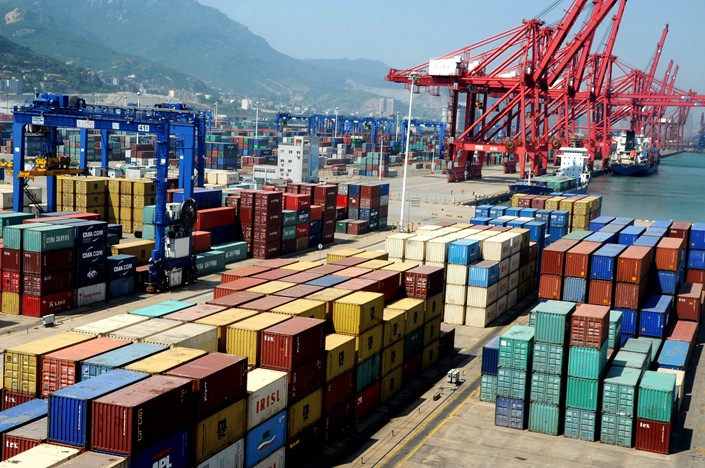
China’s economic operation in 2021 can be summarized as this: Foreign trade has gone greatly beyond expectations, while domestic demand, including consumption and investment, has been slightly below expectations. Based on the data from the first three quarters, China’s full-year economic growth is expected to exceed 8%.
However, attention should be paid to the underlying unbalanced development. For example, profits are unevenly distributed among industrial companies, reflected by significant profit growth upstream and a decline downstream. Meanwhile, the service industry and some small and midsize enterprises are fighting for their survival.
In 2022, the base effect will fade away and a high comparison base for foreign trade may drag the economic growth down. China’s economy is expected to grow at its potential growth rate. There should be no need to consider extra stimulus when making macro policy. However, it is necessary to keep an eye on risks from the external environment and domestic policy disturbances.
The first thing to note is whether global supply chain disruption will continue to worsen. Phenomena such as hikes in container shipping costs, and shortages of chips and energy, are essentially global supply chain disruptions as a result of various factors. Without effective international coordination, these disruptions may well continue in 2022.
Second, the tightening of its monetary policy by the U.S. will have an impact on the global economy. At present, it looks like the U.S. will certainly start to withdraw its quantitative expansionary monetary policy in 2022. It remains to be seen whether emerging market countries can draw lessons from history and better address the U.S.’ move to tighten monetary policy. Analysts are concerned about the direct impact the U.S. move will have on China, such as financial market fluctuations. But past experience has shown that attention should also be paid to the impacts it might have on China’s foreign trade and macroeconomy through its effect on emerging markets.
Third, any excessive domestic reforms and overlapping effects of policies will also have an impact. China has launched several-year reforms many times, which has slowed down short-term growth in order to make room for dealing with contradictions in economic development and eventually gather strength for future rapid growth.
China set a minimum economic growth target of 6% for 2021, probably to leave room for several critical reforms. This judgement is supported by relevant policies issued this year, including those addressing local governments’ hidden debt, easing the burden of excessive homework and off-campus tutoring for students undergoing compulsory education (commonly known as “double reduction”), tackling risks in the real estate market and cracking down on internet platform companies’ monopolies. In my opinion, these policies are beneficial to the long-term sustainable development of China’s economy, and therefore should be continuously implemented. However, we must be alert to excessive implementation, which will have a severely negative impact on the macroeconomic operation. In 2022, attention should be paid to the rationality of the implementation pace and intensity, especially when it comes to polices on hidden local government debt and financing of real estate developers.
Meanwhile, some policies and ideas introduced by the central government in recent years — such as regulations of internet platform companies and discussions on common prosperity — are in line with economic logic, but have led some people to believe that they will discourage the development of privately owned enterprises. This has, consequently, shaken the confidence of private enterprises when it comes to investment and development. China needs to make efforts to systematically analyze the issue and come up with some effective solutions.
Fourth, the pressure from the substantial increase in the number of university graduates. In 2022, China’s university graduates may surpass 10 million, an increase of around 1 million from this year. In the last decade, the annual increase of university graduates has been around 300,000 or below. It may be difficult to still use conventional employment policies to address the 2022 situation. Therefore, great importance should be attached to its impact on social stability and economic development. With the launch of the double reduction policy and the fact that internet companies’ expansion has hit its peak, the market is no longer able to absorb as many university graduates as before. One option to solve this issue is to strengthen investment in new infrastructure, which can not only take full advantage of the graduates’ skills, but also help ease the adverse effects of employment pressure.
Read more In Depth: Can China Pull Itself Out of the Economic Doldrums?
Wang Dehua is a research fellow with the National Academy of Economic Strategy under the Chinese Academy of Social Sciences.
This article has been edited for length and clarity.
Contact editor Bertrand Teo (bertrandteo@caixin.com)
Get our weekly free Must-Read newsletter.







